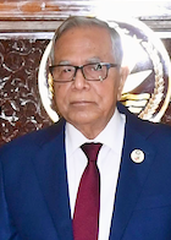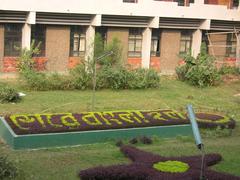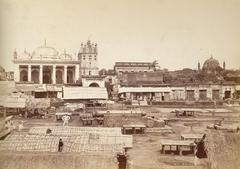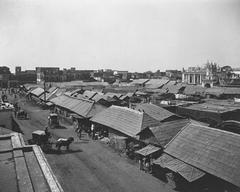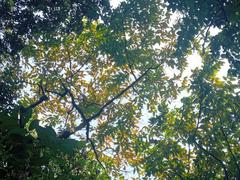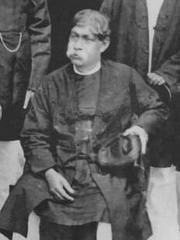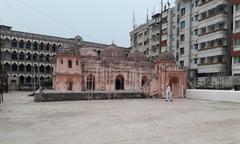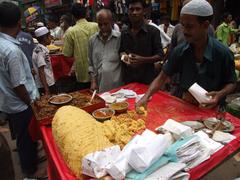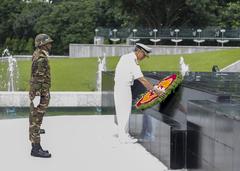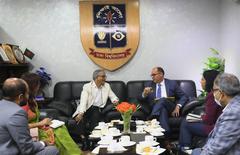Visiting Binat Bibi Mosque: History, Tickets, and Travel Tips
Date: 17/08/2024
Introduction
The Binat Bibi Mosque, located in the Narinda area of Dhaka, Bangladesh, is a remarkable historical and cultural landmark. Constructed in 1454 by Bakht Binat, the daughter of Marhamat, during the reign of Sultan Nasiruddin Mahmud Shah (1435–1459), it stands as the oldest surviving mosque in Dhaka (Wikipedia). This mosque is a testament to the early urbanization and Islamic influence in Dhaka, predating the Mughal era by over a century. It provides a rare glimpse into the city’s pre-Mughal history and showcases the architectural prowess of the Bengal Sultanate period. With its single-domed structure, intricate terracotta ornamentation, and significant historical inscriptions, the Binat Bibi Mosque is an indispensable part of Dhaka’s cultural heritage. Despite facing numerous challenges, including neglect and unauthorized alterations, the mosque continues to attract visitors from around the world, offering a unique blend of history, architecture, and spirituality (The Daily Star). This comprehensive guide delves into the rich history, architectural features, and cultural significance of the Binat Bibi Mosque, providing essential visitor information and highlighting the ongoing preservation efforts to maintain this historical treasure.
Table of Contents
- Introduction
- Establishment and Early History
- Architectural Features
- Historical Significance
- Renovations and Alterations
- Current State and Preservation Efforts
- Cultural and Historical Context
- Oral Histories and Local Legends
- Visitor Information
- Challenges and Future Prospects
- Conclusion
- Sources
Establishment and Early History
The Binat Bibi Mosque, built in 1454 by Bakht Binat, the daughter of Marhamat, stands as the oldest surviving mosque in Dhaka, Bangladesh (Wikipedia). This mosque stands as a testament to the early urbanization and Islamic influence in Dhaka, predating the Mughal era by over a century.
Architectural Features
Originally, the mosque was a square, single-domed structure measuring 12 feet (3.7 meters) internally. It featured a single hemispherical dome atop the square room, with entrances from the east, north, and south. The mosque’s pre-Mughal architectural elements included curved cornices, battlements, corner octagonal turrets, and arches on the south, north, and eastern sides. The ornamentation was modest, and the building was coated with plaster (Wikipedia).
Historical Significance
The Binat Bibi Mosque is not only significant for its age but also for its role in the early Islamic history of Dhaka. The mosque’s epigraph reads, “… Hayyah-al-falah at night and morning in the name of the Humble One. Musammat Bakhat Binat, daughter of Marhamat. In the year 861 AH (1456 AD)” (The Daily Star). This inscription highlights the mosque’s historical context and its connection to the early Islamic settlers in the region.
Renovations and Alterations
Over the centuries, the Binat Bibi Mosque has undergone several renovations and alterations. In 1932, a new dome was added, and in 1962, a new mihrab was built on the western side. These changes have altered the original pre-Mughal features of the mosque. The outer façade of the western veranda, the northern wall, the dome, and the side walls of the waterbody were decorated with traditional vernacular chinitukri work (ceramic or glass shard tiling) (Wikipedia).
Current State and Preservation Efforts
Despite its historical significance, the Binat Bibi Mosque has faced neglect and unauthorized alterations. Part of the mosque is being demolished as part of a renovation plan, which includes building a 70-foot (21-meter) high minaret and extending the current building from three stories to seven (Wikipedia). Conservation architects have expressed concerns about these changes, emphasizing the need to preserve the mosque’s original structure and avoid dissimilar designs that could compromise its historical integrity (Daily Country Today).
Cultural and Historical Context
The Binat Bibi Mosque serves as a crucial link to Dhaka’s pre-Mughal history. It provides evidence that Dhaka was an urban settlement and a trade center around 600 years ago, attracting businessmen from abroad (The Daily Star). The mosque’s existence also indicates that the advent of Islam in Dhaka occurred before the Mughal era, challenging the common perception that Dhaka’s history began with the Mughals (The Daily Star).
Oral Histories and Local Legends
Local oral histories and legends add another layer to the mosque’s rich history. According to Md Sharifuddin, a local resident, Binat Bibi came to Dhaka with her father, a businessman from a faraway land, possibly Persia. She died in Dhaka, and her father built the mosque in her memory by the Dolai river in 861 Hijri (The Daily Star). This narrative, passed down through generations, underscores the mosque’s emotional and cultural significance to the local community.
Visitor Information
Planning a visit to the Binat Bibi Mosque? Here are some essential details:
- Visiting Hours: The mosque is generally open to visitors from 8 AM to 8 PM. However, it is advisable to check the current visiting hours before planning your visit.
- Entry Fee: There is no entry fee for visiting the mosque.
- Travel Tips: The mosque is located in the Narinda area of Dhaka. Public transportation options such as buses and rickshaws are available to reach the site.
- Nearby Attractions: While in Dhaka, consider visiting other historical sites such as the Lalbagh Fort, Ahsan Manzil, and the Star Mosque.
- Accessibility: The mosque is accessible to visitors of all ages, but some areas may have limited accessibility for those with mobility issues.
Challenges and Future Prospects
The Binat Bibi Mosque faces several challenges, including neglect, unauthorized renovations, and the encroachment of modern buildings. The mosque’s original grandeur has been compromised, and the graves of Binat Bibi and her father lie uncared for (Daily Country Today). The Department of Archaeology has proposed measures to preserve the mosque, but these efforts have yet to gain traction.
Conclusion
The Binat Bibi Mosque is a vital historical and cultural landmark in Dhaka. Its establishment in the mid-15th century marks an important chapter in the city’s pre-Mughal history. Despite the challenges it faces, the mosque remains a symbol of Dhaka’s rich Islamic heritage and early urbanization. Preservation efforts are crucial to maintaining this historical treasure for future generations.




